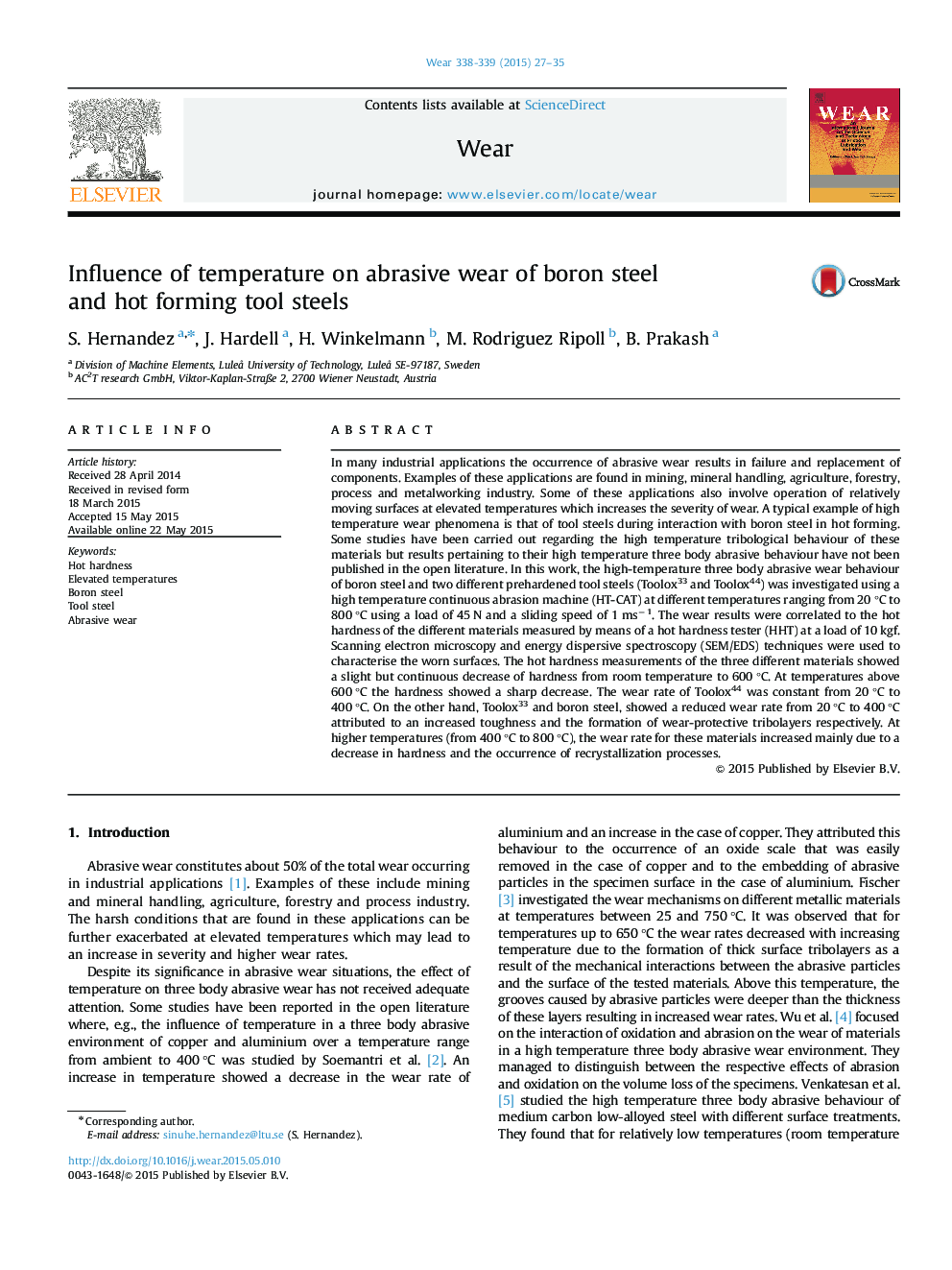| کد مقاله | کد نشریه | سال انتشار | مقاله انگلیسی | نسخه تمام متن |
|---|---|---|---|---|
| 7004144 | 1454972 | 2015 | 9 صفحه PDF | دانلود رایگان |
عنوان انگلیسی مقاله ISI
Influence of temperature on abrasive wear of boron steel and hot forming tool steels
ترجمه فارسی عنوان
تأثیر دما بر روی سایش ساینده فولاد بور و فولادهای داغ تشکیل دهنده ابزار
دانلود مقاله + سفارش ترجمه
دانلود مقاله ISI انگلیسی
رایگان برای ایرانیان
کلمات کلیدی
سختی داغ، درجه حرارت بالا، فولاد بور، فولاد ابزار، ساینده سایش،
موضوعات مرتبط
مهندسی و علوم پایه
مهندسی شیمی
شیمی کلوئیدی و سطحی
چکیده انگلیسی
In many industrial applications the occurrence of abrasive wear results in failure and replacement of components. Examples of these applications are found in mining, mineral handling, agriculture, forestry, process and metalworking industry. Some of these applications also involve operation of relatively moving surfaces at elevated temperatures which increases the severity of wear. A typical example of high temperature wear phenomena is that of tool steels during interaction with boron steel in hot forming. Some studies have been carried out regarding the high temperature tribological behaviour of these materials but results pertaining to their high temperature three body abrasive behaviour have not been published in the open literature. In this work, the high-temperature three body abrasive wear behaviour of boron steel and two different prehardened tool steels (Toolox33 and Toolox44) was investigated using a high temperature continuous abrasion machine (HT-CAT) at different temperatures ranging from 20 °C to 800 °C using a load of 45 N and a sliding speed of 1 msâ1. The wear results were correlated to the hot hardness of the different materials measured by means of a hot hardness tester (HHT) at a load of 10 kgf. Scanning electron microscopy and energy dispersive spectroscopy (SEM/EDS) techniques were used to characterise the worn surfaces. The hot hardness measurements of the three different materials showed a slight but continuous decrease of hardness from room temperature to 600 °C. At temperatures above 600 °C the hardness showed a sharp decrease. The wear rate of Toolox44 was constant from 20 °C to 400 °C. On the other hand, Toolox33 and boron steel, showed a reduced wear rate from 20 °C to 400 °C attributed to an increased toughness and the formation of wear-protective tribolayers respectively. At higher temperatures (from 400 °C to 800 °C), the wear rate for these materials increased mainly due to a decrease in hardness and the occurrence of recrystallization processes.
ناشر
Database: Elsevier - ScienceDirect (ساینس دایرکت)
Journal: Wear - Volumes 338â339, 15 September 2015, Pages 27-35
Journal: Wear - Volumes 338â339, 15 September 2015, Pages 27-35
نویسندگان
S. Hernandez, J. Hardell, H. Winkelmann, M. Rodriguez Ripoll, B. Prakash,
